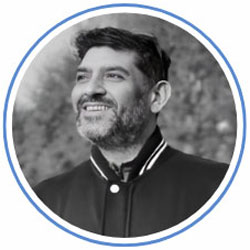I travelled for the Jodhpur RIFF to listen to 3 days of a music journey of collaborations between Rajasthani folk and various international bands. It was brilliant to say the least.
The festival venue is the Mehrangarh fort – a huge architectural marvel that stands like Atlas holding the earth; here the city of Jodhpur, one side painted in blue and the other side of the city in all different shades of white.
Some thoughts kept coming while I spent three days listening to these musicians. And whilst I was taking my notes, some mental and some on my iphone, about these observations, I realised that Leaders today can learn a lot from musicians and the way they function. There is no difference, one is the artist and the other is a business artist.
They require the same set of skills; just the language is different. The purpose is the same. State of flow increases, productivity increases, happiness increases.
Some observations and lessons from listening to these fantastic collaborations:
- You don’t need to understand each other’s language to play together. Music is a language in itself. Sometimes far more complicated than most languages, more often as simple as the sound created by the pull of a string. Some collaborations happened between two geographies where the musicians didn’t understand each other.
- To be able to skip the language barrier, and connect musically, you need to have a high degree of skill. And mental alertness. When you have the skill and the feel and the mental alertness, you can experience flow. Mihaly Csikszentmihalyi, a Hungarian psychologist recognizes flow as a highly focused mental state. He defined Flow as “A state in which people are so involved in an activity that nothing else seems to matter; the experience is so enjoyable that people will continue to do it even at great cost, for the sheer sake of doing it.”
- You have to allow yourself your feel. If it is all in the mind, and not in the body and the hear, it’s all in the clouds. There were these moments of total synthesis between these musicians and as hard it may be to explain something that accesses the super senses, the hair would stand on the arms and you would get goose bumps. These moments were not continuous but were in spurts. During that moment, everything flowed, each instrument talked to each other, every musician played the instrument and every instrument played the musician.
- A good exercise for listening is to listen to the whole and then defragment. I found myself listening to individual instruments from time to time as well as all the instruments together. It was quite amazing that in an ensemble you can defragment and hear and see each instrument being played.
- Ego can creep in even in music. And it disrupts. Sometimes two musicians want to show off their skill or want to be heard “more”. These are the times when the ego creeps in and can break the state of flow mentioned above.
- Music pushes you to be relaxed, in sync and breathe correctly. It is a great tool for awareness.
- Informed improvisations take music to another level. A lot of times, while playing together, musicians are able to feel the notes and sounds which allows them to step out of the construct of the melody or rhythm and showcase their discipline. The ability to improvise happens when you are comfortable with your skill.
- A lot of times when one musician was showcasing his skill via a solo, everyone else on stage gave him or her the space to do so by keep their own playing low and giving a comfortable ground and space. Musicians make each other look good. They support each other.
- The vision, flow and the end are very clear. It is like a Quality project. No one deserts the process mid way. They are in it with full commitment.
 Vikram Badhwar, CEO, Syngrity, is a communications coach, an experiential educator, and an artist trying to bridge the gap between the creative and the analytical side of our brain. He consults global teams in the space of learning behavioural patterns and implementing new techniques to reach Max Q potential.
Vikram Badhwar, CEO, Syngrity, is a communications coach, an experiential educator, and an artist trying to bridge the gap between the creative and the analytical side of our brain. He consults global teams in the space of learning behavioural patterns and implementing new techniques to reach Max Q potential.







 MALATI VASUDEVA
MALATI VASUDEVA VIKRAM BADHWAR
VIKRAM BADHWAR PRIYANKA KUMAR
PRIYANKA KUMAR SUMAL VARGHESE
SUMAL VARGHESE















So goes for Kathak recitals as well. There is so much commotion that one has to remind oneself of all the team work lessons 🙂
Absolutely. Most creative sciences draw the same parallels.